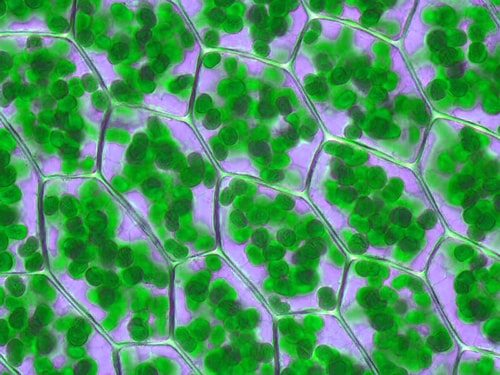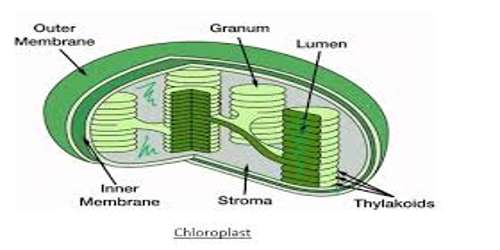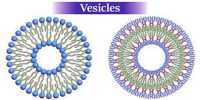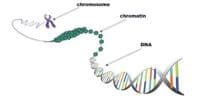Plastids are double membrane-bound organelles found in plants and some algae, which are mainly dependable for activities related to making and storing food. They are a group of phylogenetically and physiologically-related organelles found in all types of plants and algae. They are prime in size among the organelles present in the cytoplasm. They can be seen clearly under the microscope. Plastids are not present in Fungi, Bacteria and Animal Cells. One of the main characteristics of these organelles is the fact that they have a double membrane.

Plant cells with visible chloroplasts
Plastids are mainly of two types: Leucoplastid or Leucoplast and Chromoplastid or Chromoplast. Leucoplastids are colorless and Chromoplastids are colored. Chromoplastid again is of two types Chromoplast and Chloroplast.
Some of the most common plastids include:
- Chloroplasts – These plastids are green due to the presence of chlorophyll pigment, and hence are responsible for photosynthesis.
- Chromoplasts – They are found in fruits, flowers, roots, and stressed and aging leaves, and are responsible for their distinctive colors.
- Gerontoplasts – They are used for storage of starch and gravity detection
- Leucoplasts – These are colorless non-pigmented plastids found in the non-photosynthetic parts of the plant, such as the roots.
Functions of Chloroplast or plastid – All plant cells contain plastids in some shape or form. In their roles, the different types of plastids contribute to plant metabolism thus promoting plant growth and development. They are primarily responsible for activities related to making and storing food. In plants, plastids may differentiate into several forms, depending upon which function they play in the cell.
- Chloroplast of green plants and algae are known to involve in a complex procedure wherein synthesis of food molecules takes place upon fixing atmospheric carbon dioxide and releasing oxygen molecule into the fresh air. Thus, chloroplasts are the centers of synthesis and metabolism of carbohydrates.
- By trapping solar energy, green plastids manufacture food through photosynthesis. They are not only of crucial importance in photosynthesis but also in the storage of primary foodstuffs, particularly starch.
- Chromoplasts provide colored to various flowering parts. Leucoplasts help in storage of protein, starch, and oil.
- They provide color to fruits and flowers and helps in the storage of proteins, starch, and oil. Its function largely depends on the presence of pigments.
- They help in maintaining the balance between carbon dioxide and oxygen during photosynthesis.
- Like mitochondria, plastids have their own DNA and ribosomes. Hence, they may be used in phylogenetic studies.













